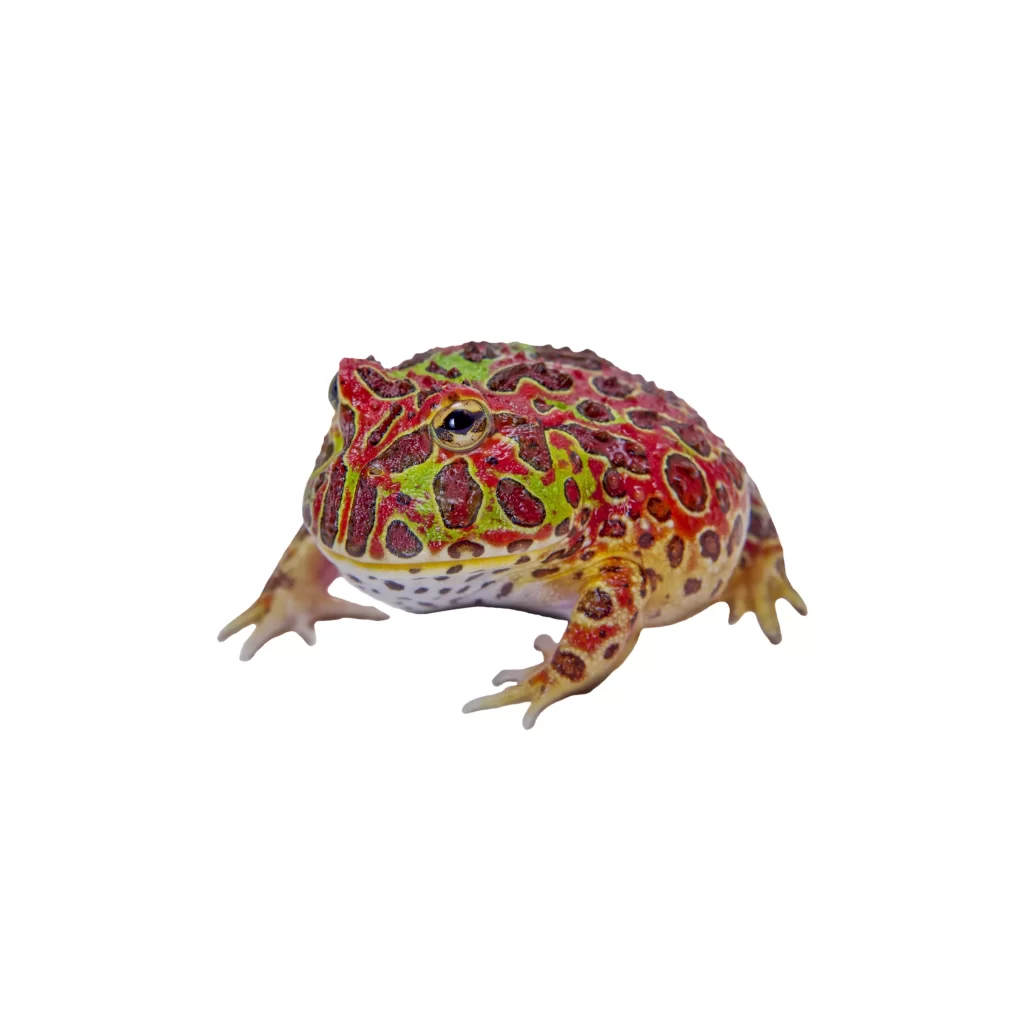🐸 Pacman Frog Tank Size Guide by Age
Find the Right Enclosure for Every Stage of Growth
Pacman Frog Tank Size Guide by Age - At a Glance
Baby Pacman frogs need 1–5 gallon enclosures, juveniles do well in 10 gallons, and adults thrive in 15–20 gallon tanks. A too-large tank can stress young frogs, while too small a tank limits movement, humidity control, and enrichment. Learn the best size for every stage below.
Getting your Pacman frog’s tank size right is one of the most important decisions for their health and comfort. These frogs aren’t very active, but they still need space to burrow, soak, and feed comfortably. And because they grow quickly, the right tank size changes over time.
In this guide, you’ll learn:
Recommended tank sizes by age and growth stage
Why “bigger isn’t always better” for young frogs
Setup tips for each enclosure size
Common tank size mistakes to avoid

Baby Pacman Frogs (0–6 Months)
Recommended Tank Size: 1 to 5 gallons
Baby frogs are tiny—often less than 1 inch long. A large tank can make feeding difficult and stress them out.
Setup Tips:
Use a small Kritter Keeper or shoebox-style tub
Maintain humidity with a sealed lid and daily misting
Shallow water dish and loose coconut fiber substrate
Avoid deep tanks or glass aquariums that are hard to control
👉 Pacman Frog Feeding Schedule by Age
👉 Pacman Frog Tank Setup for Beginners
Juvenile Pacman Frogs (6–12 Months)
Recommended Tank Size: 10 gallons (minimum)
Juveniles begin to grow rapidly and will benefit from more floor space for burrowing and movement.
Setup Tips:
Use a standard 10-gallon glass tank or front-opening terrarium
Keep substrate at least 2 inches deep
Add hiding spots like cork bark, moss mounds, or leaves
Use a screen lid with 80–90% coverage to maintain humidity

Adult Pacman Frogs (1+ Year)
Recommended Tank Size: 15 to 20 gallons
Adult frogs can reach 4–7 inches depending on sex and species. They don’t need a tall tank but do need ample floor space.
Setup Tips:
Use a low-profile, wide terrarium
Add a larger water dish (they love soaking)
Maintain consistent humidity (60–80%) and temperature (75–85°F)
Consider a bioactive setup for long-term health and lower maintenance
👉 How to Set Up a Bioactive Pacman Frog Terrarium
👉 Pacman Frog Temperature and Humidity Requirements
Tank Size Reference Chart
| Life Stage | Age Range | Ideal Tank Size |
|---|---|---|
| Baby | 0–6 months | 1–5 gallons |
| Juvenile | 6–12 months | 10 gallons |
| Adult | 1+ years | 15–20 gallons |
Common Tank Size Mistakes
1. Too Big, Too Soon
Young frogs can struggle to find food or become stressed in large tanks. Start small and upgrade gradually.
2. Too Tall Instead of Wide
Pacman frogs are ground-dwelling. A wide tank is far better than a tall one.
3. No Room for Burrowing
Floor space is critical for digging and hunting. A cramped tank causes boredom and stress.
Pro Tip: Consider Future Growth
If you’d rather avoid buying multiple tanks, a 10-gallon starter setup with dividers can work for babies, then transition to a 15–20 gallon enclosure by adulthood.
Just remember:
Too large = hard to monitor babies
Too small = cramped, hard to control humidity for adults
Final Thoughts
Tank size matters more than you might think for Pacman frogs. From tiny hatchlings to chunky adults, choosing the right enclosure size by age ensures a healthy, stress-free life. Stick with low, wide enclosures and adjust as your frog grows for the perfect long-term habitat.
FAQ: Pacman Frog Enclosure Sizes
Q: Can I keep a baby Pacman frog in a 10-gallon tank?
A: Yes, but only with plenty of hiding spots and shallow feeding areas to prevent stress or difficulty locating prey.
Q: Should I upgrade the tank as my frog grows?
A: Yes. Expect to upgrade from a small bin to a 10-gallon, then eventually to 15–20 gallons as your frog matures.
Q: Do Pacman frogs need vertical climbing space?
A: No. They are terrestrial burrowers and prefer horizontal space
